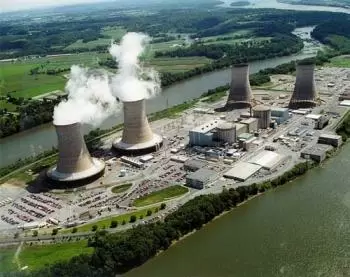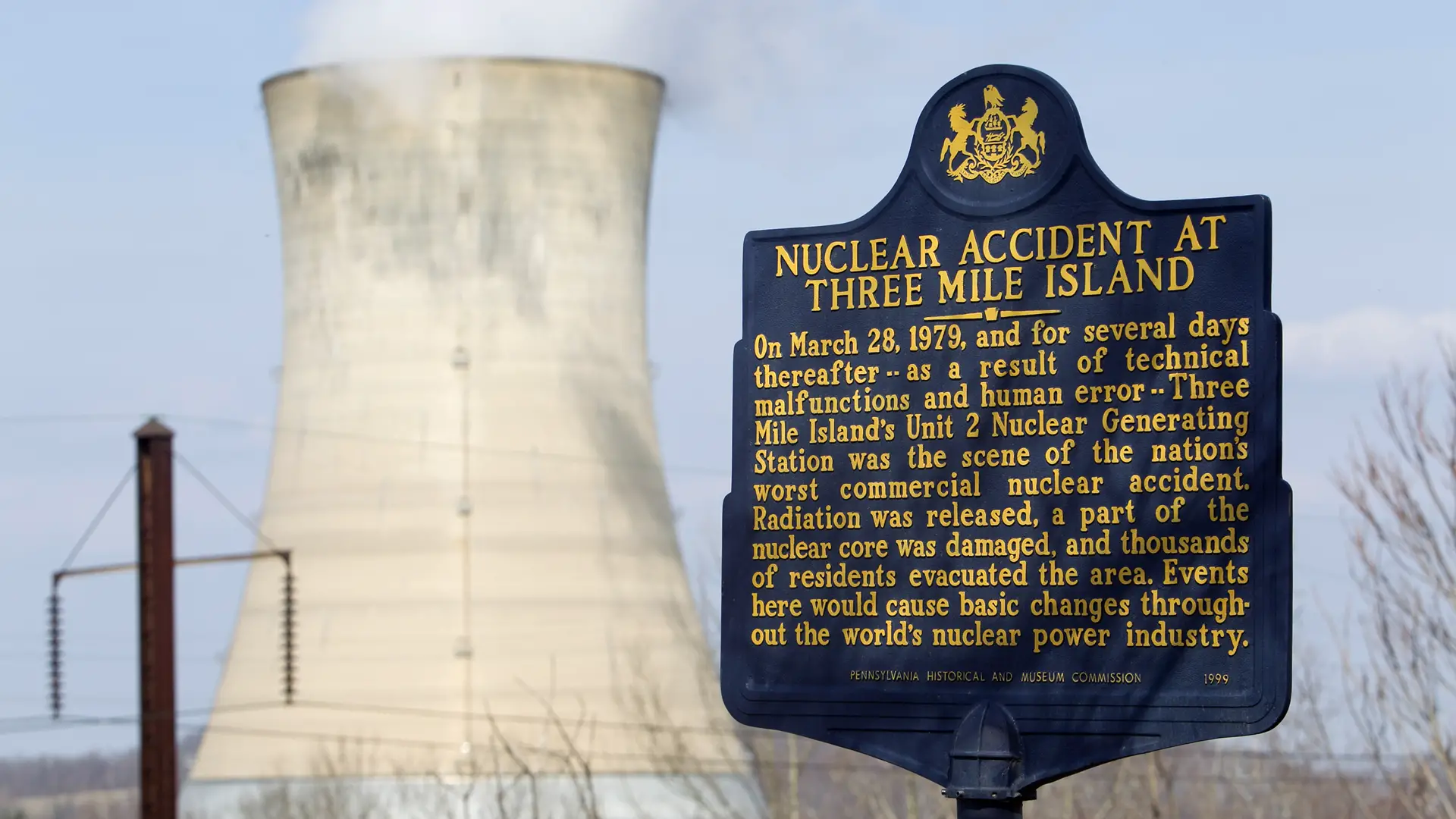
The Three Mile Island nuclear accident occurred at the Three Mile Island Nuclear Generating Station in Dauphin County, Pennsylvania, on March 28, 1979. The TMI-2 nuclear reactor suffered a partial core meltdown a year after unit commissioning.
It was the worst commercial nuclear accident in United States history. The incident began when the reactor's cooling system failed and the reactor core overheated, causing a partial meltdown of the fuel rods. The incident released some radioactive gases into the environment, which were then detected by nearby residents but not enough to cause any dose above background levels to residents.
Three Mile Island historical marker
An historical marker was put in place on In March 25, 1999.
 The Three Mile Island historical marker is located near the site of the nuclear power plant in Dauphin County, Pennsylvania. The monument commemorates the accident and its impact on public opinion about nuclear power.
The Three Mile Island historical marker is located near the site of the nuclear power plant in Dauphin County, Pennsylvania. The monument commemorates the accident and its impact on public opinion about nuclear power.
The marker location is in PA 441, South of Royalton (1 mile South of the main gate to Three Mile Island).
Three Mile Island Power Plant
The Three Mile Island plant is located about 10 miles from Harrisburg in the state of Pennsylvania, in the United States. It is a nuclear power plant with two pressurized water nuclear reactors (PWR) built by Babcock and Wilcox:
-
The TMI-1 came into operation on April 19, 1974, with an installed capacity of 786 MW.
-
The TMI-2 entered service in December 1978 with an installed capacity of 900 MW.
The plant, which had four cooling towers, was originally built by General Public Utilities Corporation, later renamed GPU Incorporated. The plant was operated by Metropolitan Edison Company (Met-Ed) when the disaster occurred.
Causes of the Three Mile Island accident
The cause of the Three Mile Island accident was a failure in the cooling of the plant's primary circuit.
Around 4 in the morning, the circuit in charge of supplying water to the steam turbines was disconnected, which caused the cooling circuit of the primary circuit to stop working.
The overheating produced in the reactor core led to an increase in pressure in the primary circuit. This increase led to the introduction of control rods that automatically shut down the nuclear reactor.
Supplemental water was pumped through the emergency cooling circuit. However, the valves that controlled the passage to the steam generator were blocked for a few moments. The responsible engineer disconnected the corresponding control automatism and mixed up various measuring instruments.
Due to these errors, the contaminated water came out, flooding the containment building that surrounds the reactor. This way, hydrogen gases and other gases with high radiation levels were released into the atmosphere (xenon and krypton). In addition, large amounts of water came out, with a low level of radioactive contamination, ending in the river.
Consequences of the accident
When it was possible six years later to enter the affected compound of Three Mile Island, an introduced camera could show that a part of the nuclear fuel had melted.
Thirty thousand people living in the vicinity of the nuclear power plant, distributed within a radius of 8 km, were exposed to certain levels of radioactivity. However, the effects of the radiation were minimal.
According to data from the Nuclear Regulatory Commission (NRC), it was estimated that the effective equivalent dose until April 7 was 3,300 people. This represents an increase of 1.5% in the annual equivalent dose received in the area by natural radiation, which is one millisievert (mSv).
The Three Mile Island nuclear power plant accident was classified as level 5 on the International Nuclear Event Scale (INES Scale).
This accident motivated the future improvement of the safety of nuclear power plants. To this end, corrective measures were defined that have been included in all countries with nuclear facilities, in addition to developing training programs and training for facility personnel.
What were the health effects?
The nuclear industry conducted several studies on the effects on the health of the population. These reports concluded that no short-term or long-term damage to people was demonstrated.
However, Greenpeace conducted parallel studies that maintained that cancer and leukemia cases increased markedly near the nuclear plant.
The decommissioning of the Three Mile Island plant
Following the Three Mile Island nuclear accident, it took 13 years of work to complete the recovery of Three Mile Island Unit 2. Work began in August 1979 and ended in December 1993, 3 years after the end of the drafted area recovery plant, in 1979.
In the final phase, it was estimated that the nuclear fuel to be withdrawn was more than 100 tons, with an expenditure of approximately 975 million dollars. The fuel was removed and fully treated from October 1985 to April 1990.
The remaining part of the site is actively monitored as no further changes are anticipated until at least 2034 when the final closure of the other unit still in operation is planned.
There are currently no significant operations on the site, only surveillance, and maintenance: the decommissioning of unit 1 was initially planned for 2014 at the end of forty years of activity, but already in 2009, the NRC, in agreement with the plant operators, decided to postpone to 2034, 55 years after the accident of Unit 2, to be able to carry it out simultaneously with that of the second (2036).


